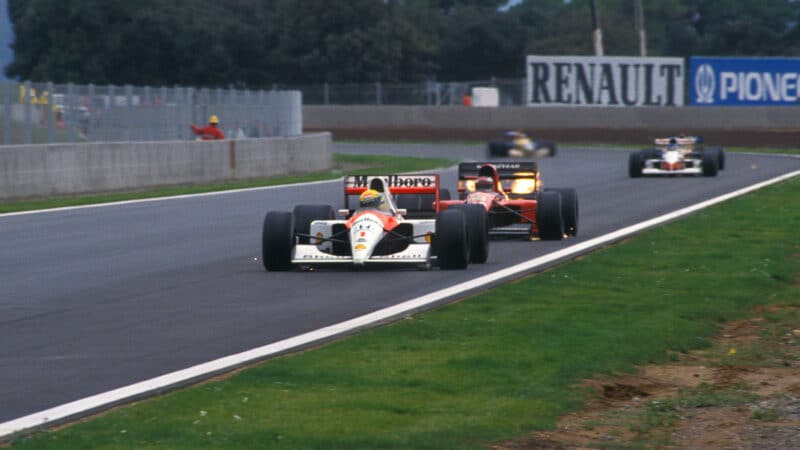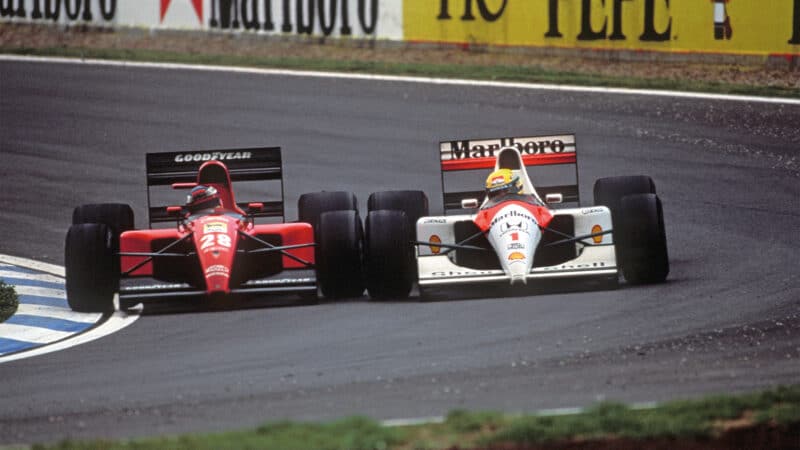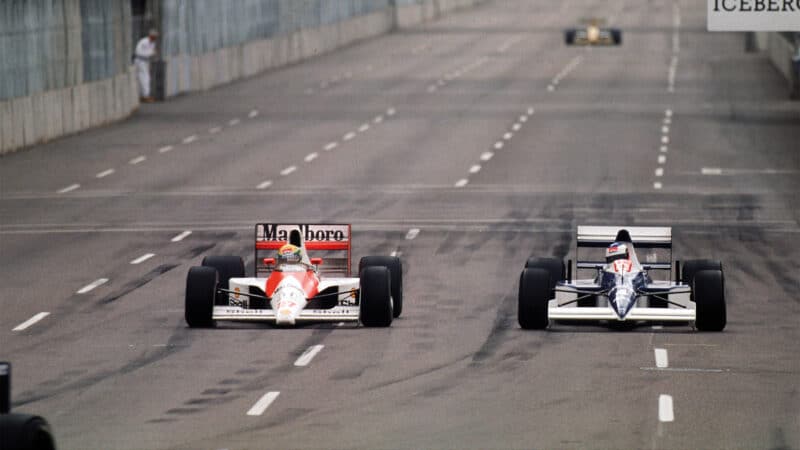Alesi retired eight times in the Ferrari that following season, and finished on the podium three times — just one more than he had done for Tyrrell. He eventually won with the team at the 1995 Canadian Grand Prix, but never had the car to launch a championship bid.
“I have absolutely no regrets, honestly,” Alesi told Motor Sport in 2017. “The Williams story is part of my life. You cannot look back. It’s like if you had an offer to buy a 250GTO 25 years ago for $10,000, and now it costs $35m. If it didn’t happen, it’s destiny.”
While Alesi may not have had any regrets, we can only imagine the racing that we could have seen. The 1991 Spanish Grand Prix offered another brief teaser. It was a race where the Ferrari 642 was showing its potential, had it not proved so unreliable, as Alesi raced up the running order after starting seventh.
Coming up to Senna in fourth place, he gained down the home straight, lined up his Ferrari for a daring pass into Catalunya’s Turn 1 and lunged for the inside. He hadn’t pulled level, and Senna had left him little more than a car’s-width of asphalt, but he threaded his Ferrari alongside the McLaren mid-corner, and powered past the Brazilian.

Alesi prepares to pass Senna in Spain
Grand Prix Photo
The timeless image of that move, showing the millimetres of margin between the cars’ tyres is reproduced in the Motor Sport 2024 calendar, which celebrates our centenary with some of the best images from F1 history.
Senna went on to win his third and final championship in 1991, before Williams conquered all in 1992 and 1993. Senna switched to the team and was just beginning another rivalry with Michael Schumacher when he was killed at Imola.
Alesi’s subsequent success in Montreal was only a brief respite from struggle at Ferrari. He left in 1996, moving on to gradually less competitive outfits in Benetton, Sauber and Prost Grand Prix: a driver tipped by Senna himself as a future world champion.
Our limited edition 2024 Motor Sport 100 Years calendar is now available from the Motor Sport shop.




